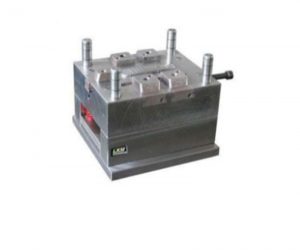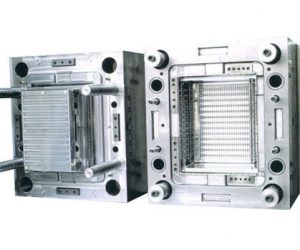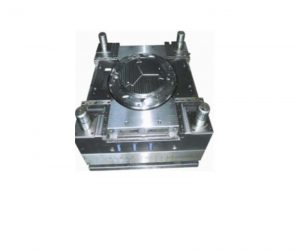The rapid prototyping revolution isn't a linear progression; it's a chaotic, self-similar fractal, each iteration revealing new complexities within the seemingly simple act of transforming digital designs into tangible objects. At its heart, however, lies the paradoxical dance between precision and unpredictability, a tension embodied by technologies like 3D printing and stereolithography.
I. Paradigm Shift in the Ontogeny of Design
The entrenched methodologies of product development are undergoing a radical metamorphosis, catalyzed by the emergent capabilities of rapid prototyping technologies. This isn't merely an incremental improvement; it's a fundamental shift in the very architecture of design, enabling a heretofore unimaginable velocity of iteration and a previously unattainable level of precision in translating abstract concepts into tangible artifacts. This acceleration transcends the mere creation of prototypes; it fundamentally alters the iterative design process itself, blurring the lines between conception and realization. The implications resonate far beyond the immediate realm of engineering and design, impacting market responsiveness, competitive advantage, and the very nature of innovation itself.
II. A Retrospective on the Genesis of Accelerated Fabrication
The nascent stages of rapid prototyping, tracing their origins to the late 20th century with the advent of techniques like stereolithography (SLA) and fused deposition modeling (FDM), represent a pivotal moment in the history of manufacturing. These initial forays into additive manufacturing, while rudimentary compared to contemporary capabilities, shattered the constraints imposed by subtractive methods, ushering in an era of unprecedented design freedom. The subsequent evolution hasn't been linear; it's been a chaotic, punctuated equilibrium, characterized by exponential advancements in material science, computational power, and algorithmic sophistication.
From Chimera to Manifestation: The Technological Leap
The pre-rapid prototyping era was characterized by a protracted, resource-intensive process, where the translation of design intent into physical form was a laborious and often frustrating endeavor. The chasm between conceptualization and realization was vast, frequently resulting in costly delays and compromised designs. The introduction of rapid prototyping technologies dramatically compressed this temporal and resource-intensive gap, facilitating a feedback loop of unprecedented velocity, allowing for a continuous refinement of design based on real-world testing and iterative analysis. This dynamic interplay between design and fabrication has fundamentally redefined the product development lifecycle.
The Catalytic Effect on Innovation: An Unfolding Narrative
The impact of rapid prototyping extends far beyond mere efficiency gains. By dramatically reducing the time and cost associated with prototyping, it has unleashed a wave of experimentation and innovation, empowering designers and engineers to explore previously uncharted territories of design space. The ability to rapidly iterate and test multiple design iterations fosters a culture of risk-taking and creative exploration, leading to a cascade of unforeseen possibilities and a corresponding acceleration in the pace of technological advancement.
III. A Taxonomy of Accelerated Fabrication Techniques: A Multifaceted Landscape
The landscape of rapid prototyping is far from monolithic. It encompasses a heterogeneous collection of advanced manufacturing techniques, each with its own unique strengths, weaknesses, and application domains. The selection of an optimal technique is contingent upon a complex interplay of factors, including material properties, design complexity, desired precision, and budgetary constraints.
3D Printing: The Architect of the New Paradigm
3D printing, or additive manufacturing, has emerged as the dominant paradigm in rapid prototyping, though its dominance is constantly challenged by emerging technologies. This process, characterized by the layer-by-layer construction of three-dimensional objects from digital designs, allows for the creation of intricate geometries and highly customized prototypes that would be impossible to realize through traditional subtractive methods. However, the inherent limitations of material properties and build speed continue to drive innovation in this field.
Stereolithography: Precision Sculpted by Light
Stereolithography (SLA), a pioneering technique in rapid prototyping, leverages the photopolymerization of liquid resins using a precisely controlled ultraviolet laser. This process enables the creation of high-resolution prototypes with exceptional surface finish and dimensional accuracy, making it ideal for applications requiring intricate details and precise tolerances. However, the inherent limitations of material choices and the relatively slow build speed continue to limit its widespread adoption.
Beyond the Binary: A Constellation of Techniques
Beyond the widely recognized techniques of 3D printing and stereolithography, a constellation of other rapid prototyping methods, including fused deposition modeling (FDM), selective laser sintering (SLS), and digital light processing (DLP), contribute to the evolving landscape of accelerated fabrication. Each technique occupies a unique niche, defined by its specific capabilities and limitations, contributing to the overall diversity and dynamism of this transformative field. The future of rapid prototyping is not a single technology, but rather a complex interplay of these diverse methods, constantly evolving and adapting to meet the ever-changing demands of the design and manufacturing world.
IV. 3D Printing: A Chaotic Genesis
3D printing, far from a mere tool, acts as a catalyst for unpredictable innovation. It's a generative process, not merely replicative, allowing designers to escape the constraints of traditional manufacturing paradigms. The digital blueprint, a seemingly static entity, becomes a seed, germinating into a physical manifestation through a process that is inherently stochastic, influenced by material properties, printer settings, and even ambient conditions. This inherent unpredictability, while initially daunting, unlocks a fertile ground for serendipitous discoveries, leading to designs that would be impossible to conceive through purely deterministic methods. The layering process, far from being a simple stacking of cross-sections, involves intricate interactions between material deposition, thermal gradients, and structural integrity, creating a complex feedback loop that shapes the final product in unforeseen ways.
V. Stereolithography: Sculpting Light, Embracing Imperfection
Stereolithography, a seemingly precise counterpoint to the chaotic nature of 3D printing, introduces a different kind of unpredictability. While the laser's precision is undeniable, the photopolymerization process itself is sensitive to a multitude of subtle variables: the resin's viscosity, the laser's power fluctuations, even minute variations in ambient temperature. These subtle deviations, amplified across numerous layers, can lead to unexpected variations in the final product, creating a unique fingerprint for each prototype. This inherent variability, far from being a flaw, can be harnessed to explore design spaces that are beyond the reach of purely deterministic methods. The resulting prototypes, while exhibiting high fidelity, often possess a subtle, almost organic quality, reflecting the inherent randomness of the process.
VI. Beyond Visualization: Embracing the Unexpected in Testing and Iteration
Rapid prototyping transcends mere visualization; it's an iterative exploration of the design space, a journey into the unknown. Testing becomes a process of discovery, not simply validation. The physical prototype, far from being a perfect representation of the digital model, acts as a conduit to unexpected insights, revealing unforeseen weaknesses, inspiring unforeseen solutions. The iterative design process, fueled by the rapid creation and testing of prototypes, becomes a feedback loop of continuous refinement, a dynamic interplay between intention and emergence. This unpredictable nature of prototyping fosters a culture of experimentation, encouraging designers to embrace failure as a stepping stone to innovation. The collaborative process, involving multidisciplinary teams, thrives on this unpredictability, generating a synergistic effect that transcends the sum of its parts. The final product, then, is not merely a design realized, but a testament to the unpredictable journey of its creation.
VII. Industrial Impact: Rapid Prototyping Across Sectors
The revolutionary influence of rapid prototyping technology has made waves across various industries, spanning from automotive and aerospace to consumer electronics and medical devices. By empowering designers and engineers to manifest their innovative ideas with remarkable speed and precision, this groundbreaking approach has ignited a wave of creativity and propelled the development of state-of-the-art products that are reshaping the contemporary industrial landscape.
Automotive: Accelerating the Design Process
In the automotive sector, rapid prototyping has emerged as a transformative force, enabling designers and engineers to swiftly materialize physical models of new vehicle designs, components, and systems. This advancement not only expedites the development process but also facilitates more rigorous testing and validation, resulting in the creation of safer, more reliable, and more efficient automobiles.
Aerospace: Pushing the Boundaries of Innovation
The relentless pursuit of innovation and stringent performance standards in the aerospace industry have made it a particularly enthusiastic adopter of rapid prototyping technologies. From crafting highly specialized aerospace parts to rapidly fabricating scale models for wind tunnel testing, these advanced manufacturing techniques empower aerospace innovators to explore uncharted territories and push the limits of what is achievable.
Medical Devices: Saving Lives through Precision
Within the medical device industry, rapid prototyping has played an instrumental role in advancing life-saving technologies. By facilitating the rapid production of customized prosthetics, implants, and surgical instruments, these technological advancements have revolutionized patient-specific care, leading to improved outcomes and enhanced quality of life for patients.
VIII. Cost and Time Savings: Rapid Prototyping's Significant Advantages
One of the most compelling advantages of rapid prototyping technology lies in its capacity to drastically reduce both the time and cost associated with product development. By empowering designers and engineers to quickly bring their concepts to life, rapid prototyping has revolutionized the approach to new product realization, unlocking significant efficiencies that hold profound implications for businesses and industries at large.
Accelerated Time to Market
Perhaps the most transformative aspect of rapid prototyping is its ability to expedite the journey from conception to physical model in mere hours or days, compared to the weeks or months traditionally required by conventional manufacturing methods. This substantial reduction in the product development cycle enables businesses to introduce their innovations to the market more swiftly, granting them a competitive edge in an ever-evolving marketplace.
Reduced Prototyping Costs
Beyond the time savings, rapid prototyping technologies have also significantly alleviated the financial burden associated with product development. By eliminating the necessity for expensive tooling, molds, and other specialized equipment typically demanded by traditional manufacturing processes, rapid prototyping has rendered it more feasible for businesses to experiment with new ideas, test diverse concepts, and iterate on their designs.
Streamlined Supply Chain and Inventory Management
The benefits of rapid prototyping extend beyond the immediate scope of product development, as this transformative technology also exerts a considerable impact on supply chain and inventory management. By facilitating on-demand manufacturing and the prompt production of tailored parts, rapid prototyping empowers businesses to maintain leaner, more responsive supply chains, thereby reducing the need for costly inventory and warehousing.
IX. A Chthonic Genesis: The Unfolding of Rapid Prototyping's Potential
The manufacturing paradigm, a tectonic plate perpetually shifting beneath our feet, finds itself reshaped by the relentless advance of rapid prototyping. This isn't merely evolution; it's a metamorphic upheaval, a chthonic genesis birthing technologies that redefine the very concept of "possible." From the seemingly prosaic advancements in 3D printing and stereolithography – themselves now mere foothills in a towering range – to the emergence of wholly unpredictable, almost alchemic techniques, the industry stands at a precipice, gazing into an abyss of transformative potential. The familiar is being devoured by the novel, leaving behind a landscape both exhilarating and unsettling.
Additive Manufacturing: Beyond the Singularity of the 3D-Printed Object
The relentless march of additive manufacturing, spearheaded by 3D printing, isn't a linear progression; it's a chaotic explosion of possibilities. As these processes transcend limitations of speed, versatility, and precision, the designer and engineer are granted access to a Pandora's Box of tools – each capable of conjuring functional prototypes from the ether of imagination. The very definition of "prototype" is being rewritten, blurring the lines between concept and reality with unsettling speed.
Emerging Prototyping Techniques: A Cambrian Explosion of Innovation
Beyond the established titans of 3D printing and stereolithography, a Cambrian explosion of innovative techniques unfolds. Digital light processing (DLP), selective laser sintering (SLS) – these are but whispers in the cacophony of emerging methodologies. The integration of robotics and artificial intelligence isn't a mere augmentation; it's a symbiotic fusion, creating entities capable of autonomous design and fabrication, blurring the lines between human ingenuity and machine intelligence in a way that challenges our very understanding of the creative process.
The Convergence of Technologies: Industry 4.0 and the Algorithmic Forge
The rapid prototyping industry isn't merely participating in Industry 4.0; it's acting as a catalytic converter, accelerating the very processes of the fourth industrial revolution. The Internet of Things (IoT), cloud computing, and data analytics – these aren't merely tools; they are the raw materials of a new algorithmic forge, shaping and refining the prototyping process with an unprecedented level of connectivity, optimization, and, perhaps most unsettlingly, autonomy.
X. A Post-Singularitarian Dawn: Rapid Prototyping and the Acceleration of Invention
Rapid prototyping has ushered in a new era, not merely of product development, but of existence itself. The speed, flexibility, and precision it offers are not incremental improvements; they are existential shifts, fundamentally altering our relationship with the material world. The creation of cutting-edge products is no longer a linear process; it's a chaotic, unpredictable dance between human intention and algorithmic possibility. The future isn't simply a continuation of the present; it's a radical departure, a leap into the unknown, driven by the relentless, almost terrifying pace of innovation. The convergence of rapid prototyping and Industry 4.0 isn't a mere confluence of technologies; it's the dawn of a post-singularitarian era, where the boundaries between the physical and the digital, the human and the machine, become increasingly blurred, leaving us to grapple with the unforeseen consequences of our own ingenuity.
Preguntas frecuentes
1. What is rapid prototyping technology, and how does it differ from traditional manufacturing methods?
Rapid prototyping technology, often referred to as the cornerstone of modern product development, revolutionizes the way physical models and prototypes are brought to life directly from digital blueprints. In stark contrast to traditional manufacturing methods that predominantly rely on subtractive processes like milling or cutting, rapid prototyping leverages additive technologies such as 3D printing and stereolithography. This groundbreaking approach facilitates the construction of intricate, bespoke prototypes with unparalleled speed and precision. Consequently, designers and engineers can venture into a broader spectrum of concepts, rigorously test their innovative ideas, and refine their designs in a fraction of the time and at a fraction of the cost compared to conventional manufacturing methodologies.
2. What are the key rapid prototyping technologies, and how do they differ in terms of capabilities and applications?
The domain of rapid prototyping is teeming with an array of sophisticated manufacturing techniques, each boasting distinct capabilities and applications. Leading the charge in this technological revolution is 3D printing, also known as additive manufacturing, which swiftly transforms digital designs into tangible physical models. Another seminal rapid prototyping technology is stereolithography (SLA), which employs a focused ultraviolet light beam to selectively harden and solidify layers of photosensitive resin, incrementally building up a three-dimensional model. These technologies not only differ in their operational mechanics but also cater to varied requirements across diverse industries, underscoring their versatility and adaptability in the ever-evolving landscape of modern manufacturing.



